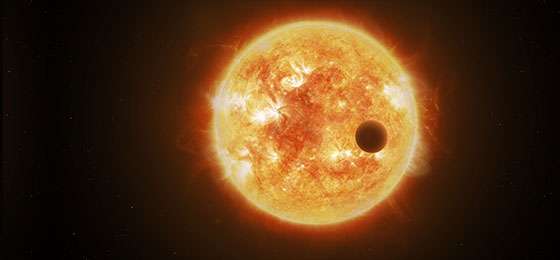Swiss space research reaches for the sky

The Rosetta mission is coming to an end, but the next expeditions across our solar system are ready for lift-off, carrying with them a number of state-of-the-art devices made in Switzerland.
After a decade of travel in outer space to reach the comet Chury, and two years spent studying it, the Rosetta mission comes to an end this Friday. The mission has been a showcase for the numerous Swiss SMEs that have participated in the construction of precision instruments and a highlight for the University of Bern. Scientists from its Physics Institute developed a key tool for the mission: Rosina, an extremely sensitive detector that can analyse the composition of the comet's nucleus and atmosphere.
The Rosetta success story demonstrates the crucial role played by fundamental research: for more than two decades, 18 grants awarded by the Swiss National Science Foundation (SNSF) with some 23 million Swiss francs have contributed directly or indirectly to the Rosetta mission.
But Rosetta is only one example of how research in Switzerland has contributed to space science. The SNSF is currently funding a number of remarkable projects, some of which will launch very soon.
Bern on the Moon, Windisch around the Sun
A key player in international space science, the University of Bern is developing an important chemical analysis tool for the Russian Luna-Resurs probe, due to land on the Moon soon after 2020, as well as for an orbiter of ESA (BepiColombo), which will explore Mercury in 2024 after a six-year journey. The Bern team also acts as co-principal investigator of the Juice mission, which will travel towards Jupiter for eight years to study Ganymede, Callisto and Europa, the three largest moons of the giant planet, starting 2030.
The University of Bern is also coordinating the construction of the Cheops satellite, which will be launched in early 2018 to study exoplanets. Once completed, Cheops will be the first Swiss satellite ever built for an ESA mission. Its construction is mainly financed by the ESA Prodex Programme through the Swiss government's Space Office, while personnel and research costs are covered by the SNSF.
Studying the Sun is another key goal of space science. Solar flares, for instance, can cause geomagnetic storms that are liable to disturb telecommunications and the electricity grid on Earth. The University of Applied Sciences FHNW in Windisch (AG) is leading the Stix project with the support of Prodex. Their X-ray camera will be carried on board the ESA Solar Orbiter, to be launched in 2017. It will settle into a low orbit around the Sun after a three-year journey. The FHNW team is also building Misolfa, an imager on an Italian satellite, which will study solar flares during the next solar maximum due to start around 2020.
Waves, debris and GPS
A team at ETH Zurich has developed electronic systems for the Lisa Pathfinder mission. Currently travelling in sync with the Earth some 1.5 million kilometres away, the spacecraft is testing core technologies for the follow-up eLisa mission. The latter will observe gravitational waves, whose discovery in February 2016 made headlines across the world.
Scientists at the Astronomy Institute of the University of Bern are using the nearby Zimmerwald Observatory to accurately monitor satellites and in particular space debris, a constant threat to spacecrafts in orbit. They are also developing tools to determine with greater precision the location of the satellites offering global positioning services, such the GPS (operated by the US), Galileo (EU) and Glonass (Russia).
Importantly, space science is also developing tools to study our own planet: for instance, satellite imagery is used to study forests and crops, the effects of climate change, or geology. Scientists supported by the SNSF are developing techniques to make such remote sensing data more accurate.
National coordination
"Space missions bring back unique knowledge that gives us a deeper understanding of our place in the Universe, and often yields practical benefits for our lives on Earth," says astronomer and SNSF research councillor Simon Lilly from ETH Zurich. "But they also have a unique ability to inspire people, because they are the manifestation of mankind's innermost need to explore, and to see places and landscapes never seen before."
Space missions sometimes span several decades and represent a major investment by the countries concerned. "Operating scientific instruments in space places extraordinary demands on materials and reliability and the necessary expertise must be built up over years," says Lilly. "The projects funded by the SNSF have gone through a rigorous and highly competitive selection process."
In the Swiss model to support space research, hardware and technical development are mostly funded by the Swiss Space Office (SERI/SSO) under the Prodex Programme, while scientific personnel and data analysis are funded by the SNSF. "It is crucial to coordinate the funding of space science and scientific infrastructures across Switzerland," says Tristan Maillard, head of natural sciences at the SNSF Administrative Offices. "This is the only way to ensure the sustainability of these important activities."
More information: More information on 15 Swiss space research projects can be found here: www.snf.ch/SiteCollectionDocum … ce_Research_List.pdf
Provided by Swiss National Science Foundation





















